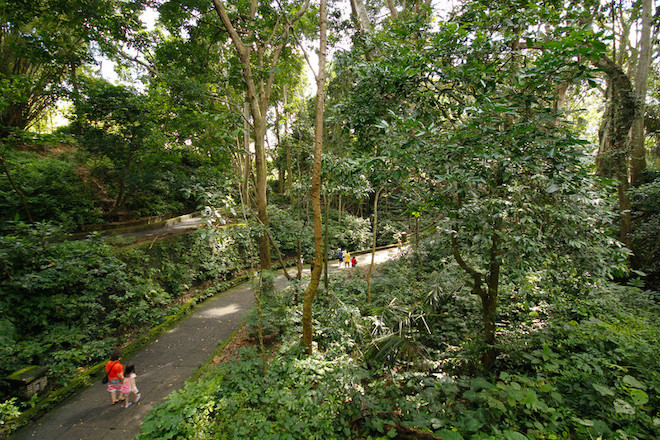
This article is published in collaboration with Arup.
As our population increases and the impacts of climate change become more evident and frequent, change is our only constant. The human footprint of cities is currently contributing to over 70% of greenhouse gas emissions and land use changes, unsustainable consumption patterns, and associated biodiversity loss.
The Organisation for Economic Co-operation and Development recently traced the world’s collective urban footprint, estimating that there are now over 10,000 cities worldwide. How many of these can you name? At a stretch, I think I could name around 200.
As we reach for net-zero emissions by 2030, to balance our actions with the planet’s needs, we must reflect and ask ourselves, will this be enough? Will transitioning to net zero recover biodiversity and habitats lost and provide the resources and food we will need to survive and thrive in the future?
While we cannot predict the future, we can shape it through the decisions we make today. To truly rebalance the needs of people and the planet, we must recover and repair what has been damaged or lost and reset our expectations of how we interact with the natural world.
In a world full of complexity, technological advancements, solutions, and ideas, how do we rebalance and restore our relationship with nature? The path forward is a long-term transformation toward regenerative design that will combine the needs of humans with those of the planet. This aspired state of harmony is not just about nature and ecosystems, but also social and economic benefits for all.
"The battle to reach and go beyond net zero, stay within 1.5ºC, and create a more regenerative future will not be won in London, Melbourne or Singapore alone. It will also need to be won in Ikire, Teresina, and Cirebon."
What is regenerative design?
Regenerative design is a process of restoring nature so humans and natural systems can coexist and coevolve in harmony. It aims to restore social and planetary health, revitalize biodiverse ecosystems, and renew natural capital.
It is also important to understand what it is not. Regenerative design is often misconceived as "urban regeneration," which focuses more on regenerating buildings and spaces within a specific urban environment. It can also be confused with sustainable design, which aims to reduce or remove environmental impacts. In contrast, regenerative design seeks to build nature-led systems that are resilient, dynamic, adaptable, and restorative, providing enrichment and opportunity for humans and other species to thrive continuously over time. Most importantly, regenerative design is about achieving net-positive outcomes.
It is our pathway to a net-positive future, going beyond sustaining natural environments, and regenerating our planet. It is a long-term shift to how humans interact with the natural environment in the future. Although we have not arrived at this future yet, we are on a pathway to uncover what we need to get there.
Regenerative design aims to restore social and planetary health, revitalize biodiverse ecosystems, and renew natural capital.
Why isn’t sustainable design enough?
Reaching net-zero emissions is an essential goal we all need to achieve for our survival. Sustainable design and approaches are our pathway to net zero and eliminating negative human impacts on the earth. They focus on using less energy and producing less waste to get us back into balance. However, we have a planet in need of repair. Sustainable outcomes will only help balance our actions and stop us from creating further damage.
Regenerative design is also an important mechanism for decarbonization. Healthy, thriving ecosystems can store carbon in their biomass and soils providing resilience to the effects of climate change through increased food security, regulation of water flows and storm surges, reduced soil erosion, and urban cooling.
One example, from our Reduce, Restore, Remove: a call to action publication, is the regeneration of terrestrial ecosystems, which include forests, grasslands, tundra, peatlands, and wetlands. Through a process of "eco-sequestration" we can restore the planet’s ecological systems to maximize their removal of carbon from the atmosphere. Forests alone could store up to 23% of global annual carbon, while three times more carbon is stored in the top meter of soils than in all global vegetation combined. This could be achieved through reforestation, ecosystem protection, and regenerative agriculture.
While regenerative design is a powerful mechanism for restoring our planetary health, it is more than a tool to get us back into balance. It provides ecological gains, improves social and economic value, and offers a new equilibrium where humans and nature can coexist.
Preparing all cities for climate action
With 10,000 cities worldwide, how can we achieve a transformation and regeneration of this scale? While larger more developed cities have a role to play in leading the way for this transition, we must empower smaller cities that do not have the skills and resources to move forward. The battle to reach and go beyond net zero, stay within 1.5ºC, and create a more regenerative future will not be won in London, Melbourne or Singapore alone. It will also need to be won in Ikire, Teresina, and Cirebon.
We can achieve this through capacity building, knowledge sharing, developing best practices at scale and working together. At the same time, we must recognize the unique context of each place to maintain the needs and identity of their citizens.
I am a Director and Global Foresight Leader at Arup. I focus on trends shaping the future of the built environment and their impact on strategy, innovation, and policy making. I work with clients and collaborators across Arup as well as external organisations from a broad range of sectors.
Regenerative design, generation alpha, and novel materials are just some of the trends that will transform the future of the built environment and wider society. Whilst it is relatively easy to identify changes, it is much harder to assess how they will impact a specific business or project. To understand the implications and to manage uncertainty, we must challenge our own perception of normality, imagine the possibilities ahead, and translate these into specific decisions for design, strategy, innovation, risk, or policy making. By looking ahead, we can ensure that we make better decisions today.
 Josef Hargrave
Josef Hargrave
Global Foresight Leader, Arup
Josef Hargrave is director and global foresight leader at Arup. He focuses on trends shaping the future of the built environment and their impact on strategy, innovation, and policy making. He works with clients and collaborators across Arup as well as external organizations from a broad range of sectors.
He is also an associate lecturer at Central Saint Martins as part of the MA for Innovation Management, a trustee at the Museum of Architecture, and a member of the World Futures Studies Federation.
This story was first published by Arup in July 2022.


